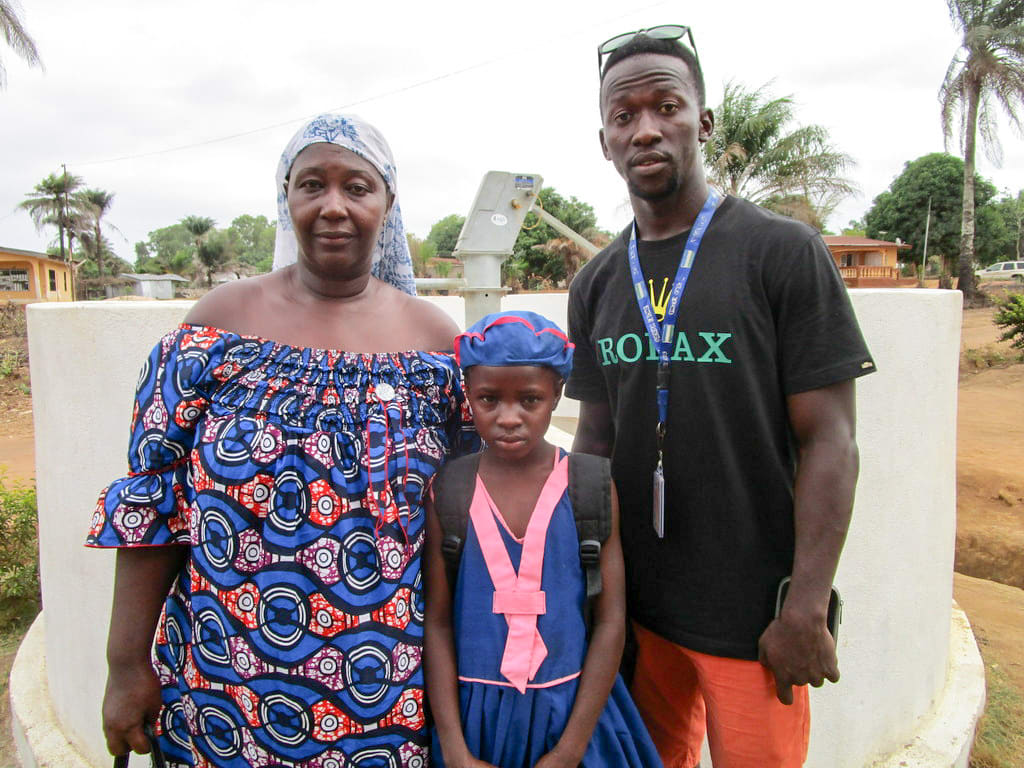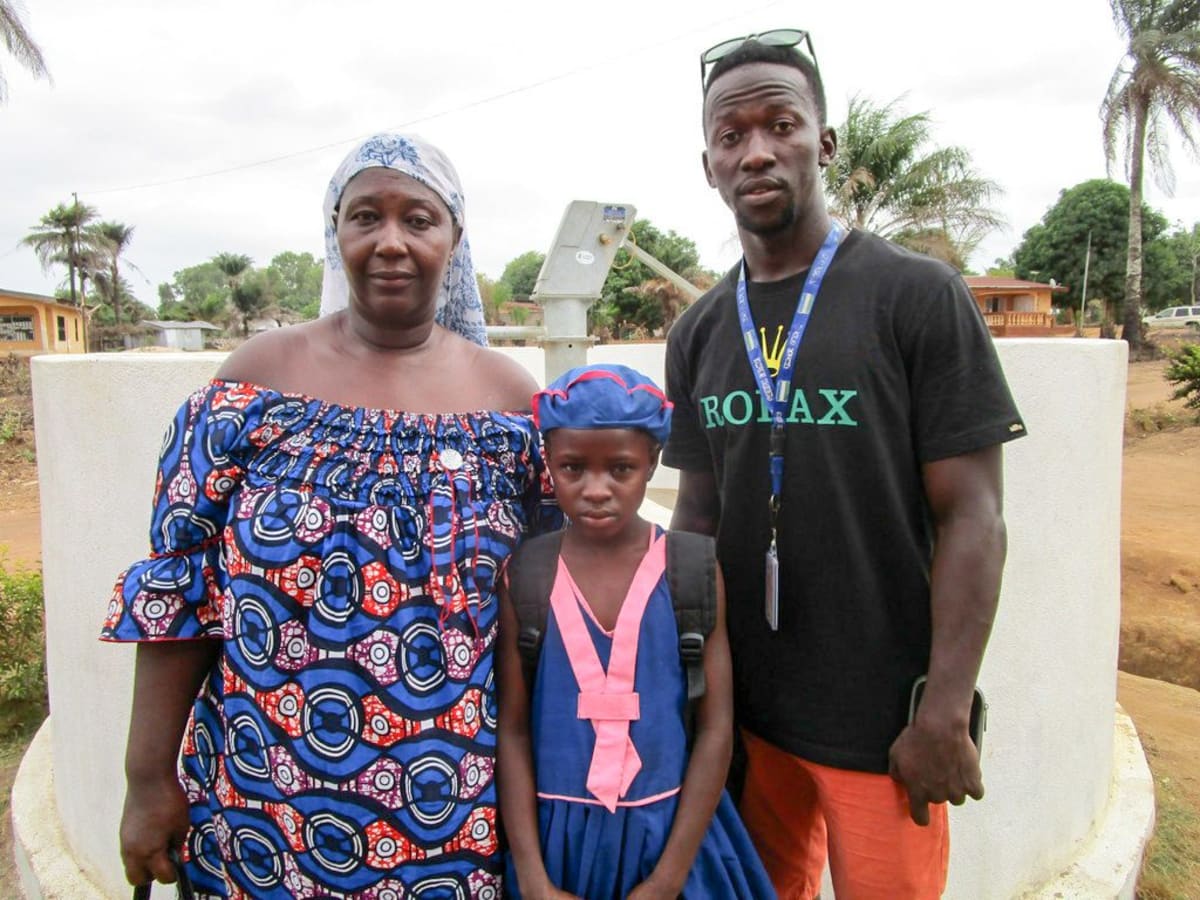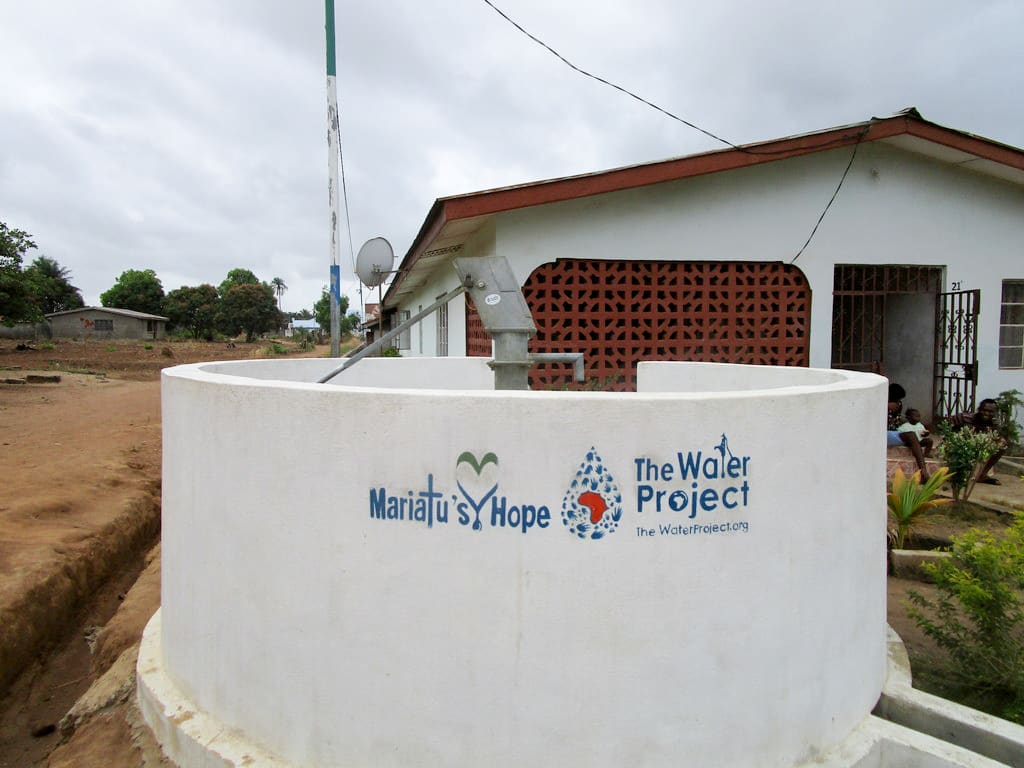This project is a part of our shared program with Mariatu's Hope of Sierra Leone. Our team is pleased to directly share the below report (edited for clarity, as needed).
Welcome to the Community
A normal day starts at 5 AM to get ready for the day. The majority of community members here are Muslim, but not every Muslim gets up this early to attend prayers at the mosque. Many locals are much more concerned about putting food on the table for their families.
Fetching water in the wee hours of the morning is not something the children look forward to, but they have no choice but to carry a bulk of the hard work around the house. After fetching water, they head home discussing the day's events and anticipating the leftover rice that their mothers are warming up. They get home and finish their chores by sweeping and washing pots and pans. Their school uniform is ironed by older siblings or parents, who use a local charcoal iron. The coal sometimes burns the uniform, and thus some students are seen with patches of varying colors.
Water Situation
There is a seasonal well within the Tholmossor community, at the home of Section Chief Pa Alimamy. It was constructed in 2001. Years later, we began receiving calls from the community, who asked us to visit the well and see what was going wrong. It turns out that during the dry months when there's no rain, the well stops producing water.
The dry season impacts anywhere from two to six months. When this happens, community members have to go elsewhere for their water. There is another hand-dug well in the community, but it is ten minutes away. The walk to this other well is along a busy road, and small children risk injury by speeding cars and motorbikes. And this being the only other protected well, the crowds at the source become unbearable. To avoid this stress, many locals resort to an open well that is much closer.
This second hand-dug well and the other contaminated source also run low during the dry season, though not as severely as the one we plan to repair. When water in these wells in inaccessible, community members draw their drinking water from a swamp.
This season affects small children the most, whether it be the long walks or the consequences of drinking dirty water.
Sanitation Situation
The majority of households here have a pit latrine, though the majority of them are not clean! People here carry around body spray to use after being in a latrine. If not, the latrine's odor will linger for hours!
The homes look clean, but they're lacking facilities. There are no helpful tools like dish racks and hand-washing stations. Animals like chickens and dogs are allowed to roam freely, even into the kitchen to enjoy the warmth from the leftover charcoal or firewood.
Plans: Sanitation and Hygiene Training
Training will last for three hours a day for three days. The facilitators have already assessed sanitation here and decided that hand-washing will be strongly emphasized. During our hand-washing sessions, community members will be taught how to make their own hand-washing station out of a plastic jerrycan, sticks, and rope. These are the best solution for rural areas, since all the materials are all easily replaceable. The same thing will be done for dish racks.
Other sessions will teach about how important it is to have a well-built and well-cleaned latrine. They should have roofs and the pit should be covered when not in use. Before construction work can begin, every single household must have their own pit latrine.
Training will also result in the formation of a water user committee that will take responsibility for their new well. The members will manage and maintain the pump to the best of their ability, and will call our office if they need a mechanic to make a repair.
Plans: Well Rehabilitation
The well marked for this overhaul needs major work to supply adequate, clean water to the community year round. The pump will be removed, and a man will be lowered inside with a hand auger. This hand auger will allow the team to drill several meters deeper to hit a new water table, which will ensure the well supplies water throughout the drier seasons. As the team drills, casing will be installed, transforming this hand-dug well into a pseudo-borehole. PVC piping will connect this lower system directly to the pump, a construction that we know will also improve the quality of water.
Once this plan is implemented, everyone within the community will have access to safe drinking water in both quality and quantity, even through the dry months.

 Protected Dug Well
Protected Dug Well






















